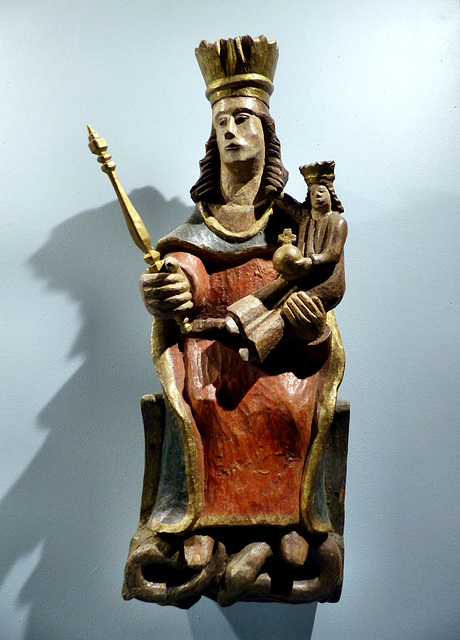Olsztyn - Muzeum Warmii i Mazur
Barczewo - Kościół św. Anny
Barczewo - Kościół św. Anny
Barczewo - Ultreia!
Barczewo - Łączy kultury
Tallinn - Niguliste kirik
Magdeburg - Dom
Dortmund - Marienkirche
Hildesheim - Dommuseum
Monreale - Duomo di Monreale
L'Aquila - Museo nazionale d'Abruzzo
L'Aquila - Museo nazionale d'Abruzzo
L'Aquila - Museo nazionale d'Abruzzo
L'Aquila - Museo nazionale d'Abruzzo
L'Aquila - Museo nazionale d'Abruzzo
L'Aquila - Museo nazionale d'Abruzzo
L'Aquila - Museo nazionale d'Abruzzo
L'Aquila - Museo nazionale d'Abruzzo
L'Aquila - Museo nazionale d'Abruzzo
L'Aquila - Museo nazionale d'Abruzzo
L'Aquila - Museo nazionale d'Abruzzo
L'Aquila - Museo nazionale d'Abruzzo
L'Aquila - Museo nazionale d'Abruzzo
L'Aquila - Museo nazionale d'Abruzzo
L'Aquila - Museo nazionale d'Abruzzo
Pals - Sant Pere
La Seu d’Urgell - Museu Diocesa
La Seu d’Urgell - Museu Diocesa
La Seu d’Urgell - Museu Diocesa
La Seu d’Urgell - Museu Diocesa
Agen - Musée des Beaux-Arts
Tangermünde - St. Stephan
Tangermünde - St. Stephan
Halberstadt - Liebfrauenkirche
Naumburg - Dom
Almazán - San Miguel
Toro - Colegiata de Santa María la Mayor
Salamanca - Catedral Vieja
Salisbury - Cathedral
Gdańsk - Bazylika św. Mikołaja
Anklam - Marienkirche
Ratzeburg - Ratzeburger Dom
Lübeck - Dom
Lügde - St. Marien
Chaumont - Basilique Saint-Jean-Baptiste
Beaune - Collégiale Notre-Dame de Beaune
Belleville - Abbatiale de l'Assomption
Boppard - St. Severus
Mont Sainte-Odile Abbey
Chaource - Saint-Jean-Baptiste
Müstair - St. Johann
Lucca - Santa Maria Forisportam
Santo Domingo de la Calzada - Cathedral
Beaulieu-sur-Dordogne - Saint-Pierre
Beaulieu-sur-Dordogne - Saint-Pierre
Huesca - Catedral de Santa Maria
Huesca - Catedral de Santa Maria
Huesca - Catedral de Santa Maria
Location
See also...
Keywords
Authorizations, license
-
Visible by: Everyone -
All rights reserved
-
45 visits
Olsztyn - Muzeum Warmii i Mazur


From 1230 to 1283 the Teutonic Order conquered the entire territory of the Slavic Prussians. In 1243 the bishop of Warmia received 1/3 of the territory of his diocese for his maintenance. The town was founded in 1353 under the name of Allensteyn by the chapter of the cathedral of Warmia on its territory. At that time, the castle was already under construction.
In 1454 the town joined the Prussian Confederation against the Teutonic Order. The townspeople captured the castle and recognized the sovereignty of the Polish king, but a year later the town was reconquered by the Teutonic Order. During the war the town was in flames several times. By the peace treaty in 1466, Olsztyn and the entire Duchy of Warmia came under Polish sovereignty.
For centuries the city was an important centre of trade, crafts, science and administration in the Warmia region.
The "Zamek Kapituły Warmińskiej" ("Castle of Warmian Cathedral Chapter") was erected between 1346 and 1353. The south-east wing of the castle was built in the 15th century. The 40-meter tower dating back to the 14th century was placed in the eastern corner of the courtyard. In the 16th century the castle's fortifications were raised to 12 meters in height. This made the castle a major bastion located on the borders of Olsztyn.
The castle belonged to the chapter of Diocese of Warmia, which until 1454 was protected by the Teutonic Order. In the years of 1516 to 1521, the administrator of the castle was Nicolaus Copernicus.
Over time, the castle's importance diminished. In 1758, a direct entrance from Olsztyn was built, and a palace wing was built; the expansion meant that many of the fortifications were deconstructed.
The "Museum of the Warmian-Masurian Voivodeship" had a nice exhibition on wooden "folk sculptures" from wayside shrines in Warmia.
In 1454 the town joined the Prussian Confederation against the Teutonic Order. The townspeople captured the castle and recognized the sovereignty of the Polish king, but a year later the town was reconquered by the Teutonic Order. During the war the town was in flames several times. By the peace treaty in 1466, Olsztyn and the entire Duchy of Warmia came under Polish sovereignty.
For centuries the city was an important centre of trade, crafts, science and administration in the Warmia region.
The "Zamek Kapituły Warmińskiej" ("Castle of Warmian Cathedral Chapter") was erected between 1346 and 1353. The south-east wing of the castle was built in the 15th century. The 40-meter tower dating back to the 14th century was placed in the eastern corner of the courtyard. In the 16th century the castle's fortifications were raised to 12 meters in height. This made the castle a major bastion located on the borders of Olsztyn.
The castle belonged to the chapter of Diocese of Warmia, which until 1454 was protected by the Teutonic Order. In the years of 1516 to 1521, the administrator of the castle was Nicolaus Copernicus.
Over time, the castle's importance diminished. In 1758, a direct entrance from Olsztyn was built, and a palace wing was built; the expansion meant that many of the fortifications were deconstructed.
The "Museum of the Warmian-Masurian Voivodeship" had a nice exhibition on wooden "folk sculptures" from wayside shrines in Warmia.
Alexander Prolygin, Paolo Tanino have particularly liked this photo
- Keyboard shortcuts:
Jump to top
RSS feed- Latest comments - Subscribe to the comment feeds of this photo
- ipernity © 2007-2024
- Help & Contact
|
Club news
|
About ipernity
|
History |
ipernity Club & Prices |
Guide of good conduct
Donate | Group guidelines | Privacy policy | Terms of use | Statutes | In memoria -
Facebook
Twitter

Sign-in to write a comment.